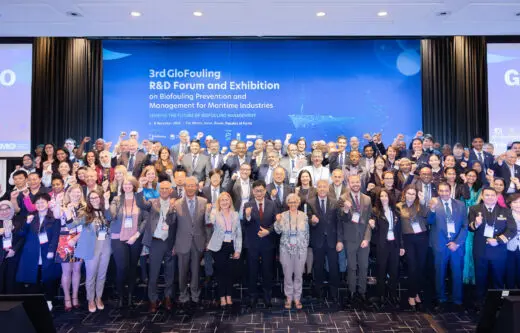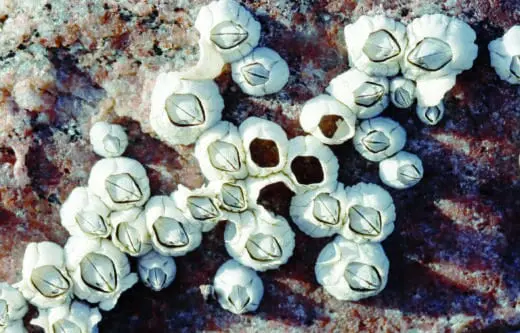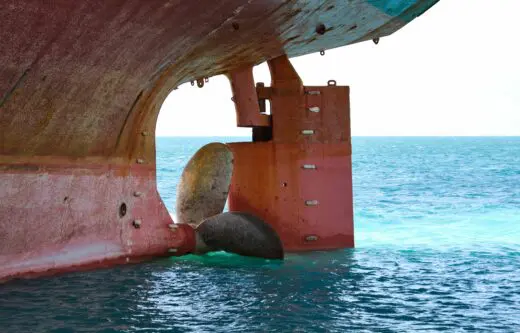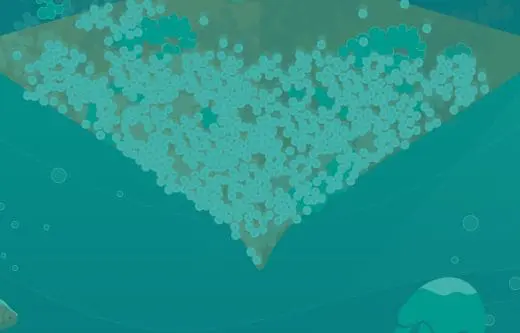Barnacles: between a rock and a yard place
Marine biofouling is cyclical and diverse in its prevalence and impact throughout the shipping community, varying from season to season and region to region. One of the most significant risk factors behind biofouling prevalence is temperature. Tropical and sub-tropical zones are known in the coatings industry as ‘biofouling hotspots’ or ‘biofouling red zones’ as they have the highest concentration of biofouling marine life.
Any vessel lying idle for a period of time in these waters is at significant risk of unwelcome marine life accumulating on its hull, and the significant financial penalties that come with it. For barnacle species, a ship hull sitting still in the water is prime real estate.
Global trade patterns have shifted a dominating portion of seaborne trade towards these biofouling red zones, with ships at anchor or queuing in increasingly congested ports at high risk of biofouling becoming an increasingly common occurrence.
Ship owners also face increased fouling risk when they commit their vessels to undergo repairs and upgrades or commission the building of new ships in shipyards located in these regions. A yard stay represents a period of significant investment for an owner, where they expect to be conducting a thorough maintenance or retrofit schedule to ensure smooth, efficient and reliable operation for the foreseeable future.
Barnacle fouling on the hull could mean that vessels do not meet their original efficiency specifications, or at worse, fail their sea trials because of affected performance. This means that during a yard stay, solutions are needed to prevent the accumulation of hard fouling under intense, super static conditions.
Most marine coatings are not designed to function well during long idling periods. Therefore, when a freshly coated vessel is sat at anchor in a shipyard for months during the outfitting process, the 60-month coating system is unlikely to protect the hull. Consequently, the only solution available is to employ costly, and highly damaging hull cleaning solutions before the vessel is delivered to the owner.
To protect owners against highly impactful barnacle fouling during yard stays, especially at those located in biofouling hotspots, many outfitting antifouling coatings containing Selektope® are being launched to the market. Because of the relatively high number of shipyards and the issue of biofouling in them, South Korea is a hotspot for Selektope® use.
Selektope® is added to marine coatings of new builds to help ensure that hulls can stay barnacle free during the outfitting phase. When added to a marine coating, Selektope® helps prevent the accumulation of barnacles on the hull and any other submerged surface.
It specifically targets barnacle larvae, the stage of the barnacle life cycle where they find surfaces to attach to. By inducing temporary hyperactivity in the swimming legs of the barnacle larvae, they are prevented from sticking to a Selektope® painted hull. After a short while, and once the vessel has moved on, they return to their normal status and attach to other surfaces. Based on this action, it is particularly effective in vessels when idle and operating at low speeds, which would otherwise be optimal times for barnacle fouling to accumulate.
This is an example of innovation in a sector that is facing an increasing amount of scrutiny as the challenge of biofouling expands and vessel optimisation becomes more critical as part of the modern shipping industry.
The global antifouling industry has been expanding, growing to its current estimated value of US$1.5bn, with 6 major coatings manufacturers being the mainstay of the marine coatings industry. Within the entire coatings industry, the use of Selektope® has been rapidly growing since the first commercial antifouling coating containing Selektope® was launched in 2015.
Since 2018, we have welcomed continuously strong market demand from South Korean shipyards in response to the acute barnacle fouling challenge they face.
In response to this demand, I-Tech has appointed KhaiEL as the exclusive importer and agent of Selektope®. Furthermore, to meet the continued high demand from the South Korean region, I-Tech has scaled up production to ensure that Selektope® supply can meet demand now and in the future.
Related articles

Innovative Solutions and Global Collaboration: Highlights from the 3rd GloFouling R&D Forum in Busan

Barnacles: Invited or Invader?

Exploring the Diversity and Resilience of Barnacles!
